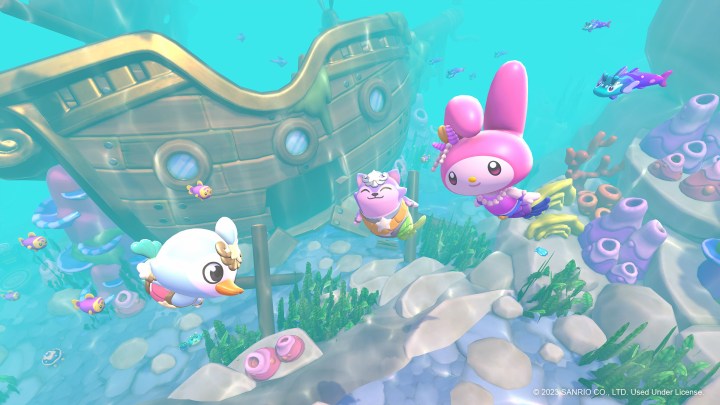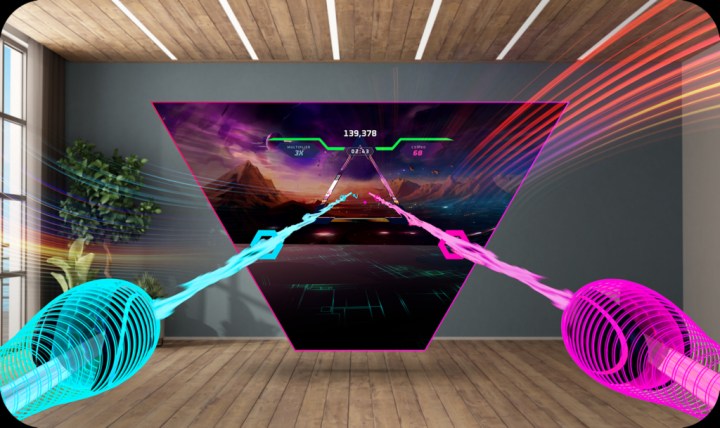
Whenever Apple rolls out a lofty new idea, it invites as many skeptics as it does fans. Devices like the Vision Pro birthed naysayers from the moment it was announced, but armchair criticism has rarely, if ever, put a dent in the tech giant’s plans. It has a way of committing to its products and initiatives, even when outsiders might think no one is using them.
That’s been the story of Apple Arcade since it launched in 2019. The service came at a time when the biggest tech companies were hungry for a piece of the lucrative video game industry. While Google and Amazon tried to break in with cloud platforms, Apple laid out an entirely different vision: a mobile subscription service full of games that featured no ads or microtransactions. It sounded too good to be true – and some people at that time weren’t convinced. Look back at the comments on its original tweet announcing the service and you’ll find a mess of replies ripping it apart.
The most to the point one: “It will fail,” one user wrote.
Four-and-a-half years later, Apple Arcade still stands. If anything, Apple has only doubled down since then by expanding the service’s offering to mobile classics and bringing exclusive spatial games to the Vision Pro. Through years of speculation and dire reports about internal business struggles, Apple has kept its head down during that work and stayed tight-lipped about how its service works or what its user base looks like. It’s a black box that keeps pumping out games.
As the platform’s five-year anniversary approaches, Apple is finally loosening up about the project. In an interview with Digital Trends, Alex Rofman, Apple Arcade Senior Director, provided some rare insight into the platform’s inner workings. While Apple is still keeping its key metrics a mystery, Rofman explained the strategic shifts that have defined the platform and signaled that the end still isn’t nigh for the mobile gaming service.
The premium dream
When Apple Arcade launched in 2019, its business model felt utopian. While the mobile market at the time was focused on free games supported by ads and microtransactions, Apple would instead offer a slew of premium games for a small $5-per-month fee (it has since risen to $7 after a one-month free trial, with a $50 annual option). The service would start on an impressive foot, with a massive selection of games to choose from. That list included everything from indie darlings like Sayonara Wild Hearts to a handful of IP-driven projects. For Apple, the initial goal was to create a family-friendly alternative to the Wild West mobile space.
“I’m sure you’re aware of what the mobile game landscape was five years ago, where the premium games that helped define our platform as great for gaming didn’t really have a place on mobile anymore with the rise of free-to-play and ad-supported games,” Rofman said. “We really wanted to make sure those games existed for customers because there are plenty of people of all ages who feel like free-to-play isn’t right for them.”
Bring us an incredible game. Don’t worry about the business model.
Even when Rofman talks about the platform’s original goal now, it still sounds utopian in the context of an industry defined by profit. Clear metrics, like subscriber counts or download numbers, never come up during our conversation when I ask about what success looks like for Apple Arcade. His focus is solely on game quality, noting that Apple Arcade exists as a space for developers to focus on their craft over business.
“We sought out developers from around the world,” Rofman says. “The charter to them was ‘bring us an incredible game.’ Don’t worry about the business model. We’re mitigating risk for you with the business model of Arcade. You just focus on making something wonderful for customers.”

Whether it’s idealistic or not, the strategy continues to pay off. Apple has maintained close relationships with some key partners since the platform’s launch. Chief among those is Sega, which dropped the standout Sonic Dream Team on the platform last December and is following it up with a new Puyo Puyo game this year. Rofman chalks some of that relationship up to the service’s setup, one that lets Apple handle the complexities of mobile distribution for older studios still learning to adapt to it.
“I think we’ve seen over the years that some of the more traditional studios have had a more challenging time adopting free-to-play than some of the studios that were born in the last 15 to 20 years,” Rofman says. “I think they welcome the opportunity to just bring a great game, without regard for the business model, to many millions of people.”
Sneaky success
What remains a mystery is the exact terms of the deals between Apple and creators developing for the platform. There’s no publicly available information about how much a studio gets paid to bring its game to Apple Arcade. What Rofman does shed light on, though, is how some of those projects come together in the first place. While Apple does field pitches for the platform, it has been proactive about working with regular studios and actively courting legends like Hironobu Sakaguchi (Fantasian) and Yu Suzuki (Air Twister).
“There are scenarios where we come up with an idea for a game and we will talk to developers about it and see if they’re interested because we know they’re good at making certain kinds of puzzle games or life sims, for example” Rofman says. “With Sakaguchi and Suzuki-san, they’re both legendary game makers. Neither of them grew up in the free-to-play age. They make premium experiences. We felt like they would be perfect people to work with and be a part of Arcade because those kinds of games might not exist on mobile were it not for our services.”

So, how successful has that been for Apple Arcade? Rofman is still keeping the exact numbers quiet, but he says that “every critical metric for the service hit record highs in 2023” after it launched 65 new games and over 400 content updates for existing ones. Rofman gives me a rough idea of what kinds of things Apple wants from a game on its service. He emphasizes games that are easy to learn, but hard to master as a focus. Apple strives to foster inclusive games, too. He cites last year’s Hello Kitty: Island Adventure as a key success story, noting that it’s the platform’s most popular game to date.
But it’s not just brand-driven projects that are working for Apple. Rofman cites a number of surprising hits, from Retro Bowl to the DICE Award-winning What the Car? The biggest shock for him has been Sneaky Sasquatch, a launch game that’s gained a loyal following.
“We hear from customers all over the world whose kids want Sneaky Sasquatch birthday parties!” Rofman says.

What’s a little shocking about that list is that almost every game Rofman namechecks is an original IP. It’s not an easy feat to create a successful new property in the franchise-driven gaming world, especially when you’re sitting in a free library next to SpongeBob and the Ninja Turtles. All of those games have been key to Apple’s wide-ranging strategy, says Rofman, and the investment in original titles isn’t expected to slow down despite Hello Kitty’s success.
“You can’t replace the value of known and successful IP that’s a perfect match for the kind of game it’s attached to, but we also see Arcade as a vehicle to bring lots of innovative experiences to our players,” Rofman says. “There’s a mix of innovative new games from mostly smaller studios, there’s the existing evergreen games that people still love to play, and then there’s the bigger IP games that have legacy and history. We’re not a niche service, so we can’t do [just] one of those things. They’re all important to what makes Arcade as a whole.”
Evolving tactics
Apple Arcade hasn’t endured by staying totally stagnant. The service’s strategy has broadened since its launch, even if its never thrown out its core ideals. Though due to Apple’s secrecy, we’ve only learned about what those changes are through unconfirmed reports. A 2020 story from Bloomberg reported that Apple had begun canceling contracts with some game makers in a strategic shift that would focus the service’s efforts on high-engagement games. When asked about the reporting, Rofman confirms the shift, though he paints the term “engagement” as a reductive version of Apple’s goal.
“We’re always looking to evolve the service based on what’s resonating best with customers,” Rofman says. “There will always be a place for finite games on Arcade — games that might only have an hour-and-a-half or three to five hours of gameplay. But the reality is that a lot of people’s behavior on mobile is multiple times a day for just a few minutes. It wasn’t so much driven by engagement, but rather meeting players’ needs. For mobile, that’s games that are easy to pick up and can be played in short sessions, but are also highly replayable. You can translate that into engagement if you like, but really it’s about games that suit the device and suit people’s playstyles.”
That thinking was part of Apple Arcade’s major expansion in 2021, which brought classic mobile games to the service alongside a slew of new releases from high-profile studios. Among that list was World of Demons from developer PlatinumGames. That was a major grab for the platform, reaffirming its commitment to original titles from high-profile developers alongside an influx of engagement-heavy classics.
When a game leaves Arcade, we don’t retain any rights to that game.
But World of Demons would become a symbol for the potential downsides of the service. Earlier this year, the game was delisted from Apple Arcade. It’s no longer available on the service, and since it was never ported over to another platform, it can never be played again. That potential preservation crisis is an underlying anxiety of subscription services that have timed deals attached to them. That’s given naysayers more ammunition, but Rofman notes that nothing is actually stopping developers from taking their delisted games to other platforms, even the App Store. But there’s a hard reality to the situation too.
“When a game leaves Arcade, we don’t retain any rights to that game. It’s not our IP,” Rofman says. “The developer is always free to take it to the App Store, Steam, Switch or to console. We would love to see games that leave Arcade go to the App Store. But the reality is that games that have been around for several many years, the studio might not want to have a team assigned to them or continue to support those games. They want to put the team onto something new. We encourage developers to bring their games to the App Store when they leave Arcade, but ultimately the decision is theirs.”
Concerns like these haven’t slowed Apple down. If anything, its gaming ambitions are accelerating. “Arcade and games have never been more important to Apple than they are today,” Rofman says at the start of our conversation. If that statement is a bluff, it’s a very convincing one. In the last year, Apple has brought games like Resident Evil 4 and Death Stranding to its devices, nabbed IP-driven Arcade exclusives like the upcoming Puyo Puyo Puzzle Pop, and even expanded into an entirely new kind of experience: spatial gaming.

While gaming wasn’t initially a major focus for Apple’s newly released Vision Pro, the device’s launch came with a secret influx of games. New titles like Game Room and updates to classics like What the Golf? released alongside the platform, giving owners a handful of ways to experience the headset’s mixed reality hook. Apple Arcade is committed to doling out more support for the platform, as Rofman notes that there’s “more to come.” As for the games available now, Apple was very deliberate about its selection process.
“We’ve seen a lot of interest in Arcade partners in either developing concepts from the ground up, like we saw with Super Fruit Ninja, and also from developers who can come up with creative ways to add a spatial element to their games,” Rofman says. “There was a method to our madness! With the games we chose for the launch, we wanted to show off different aspects of the platform to help set a high bar for the broader developer community to embrace.”
That seems to be the running theme throughout Apple Arcade’s history. Rather than focusing solely on success metrics, Apple has stopped to prove its vision time and time again. First it was homing in on quality games with no ads to sell the service’s utopian sales pitch. Then it was a major expansion that showed its commitment to bringing players a large, ever-growing library. Now, it’s making an experimental case for spatial gaming as the next phase of the platform rolls out. It’s a consistent pattern that’s kept the service from stagnating buy settling on one hyper-focused road to profitability.
Even if the platform does one day come to an end, those cynical social media comments from 2019 are starting to age like milk. No, Apple Arcade has not failed — it’s onto another dimension.



